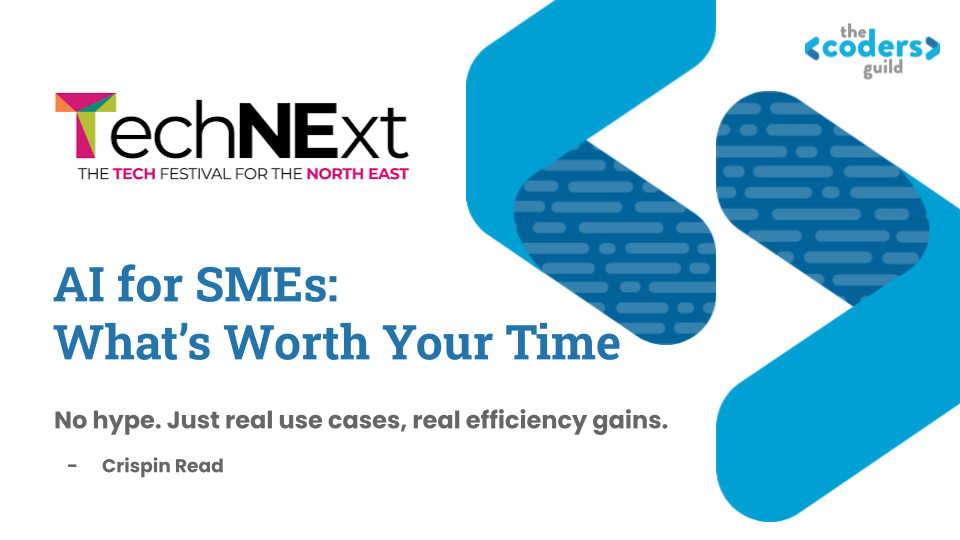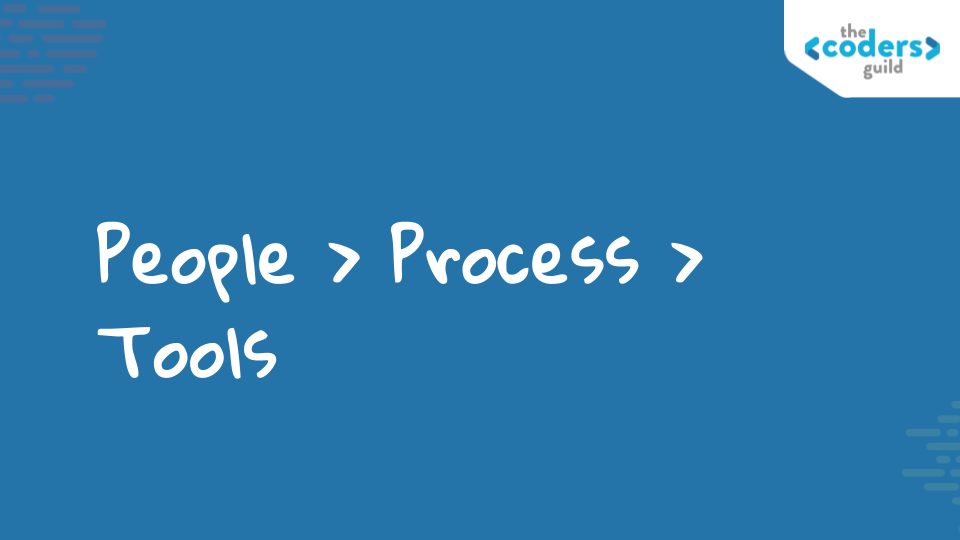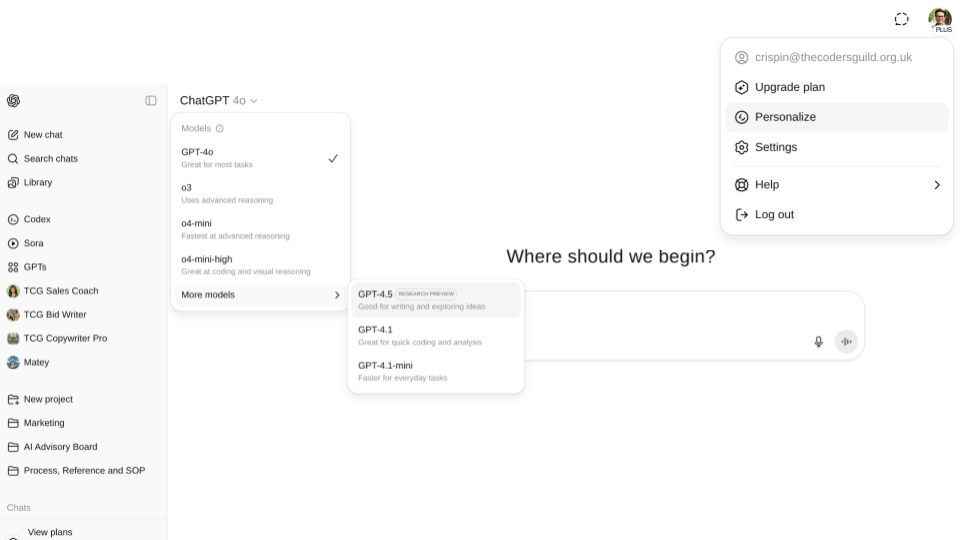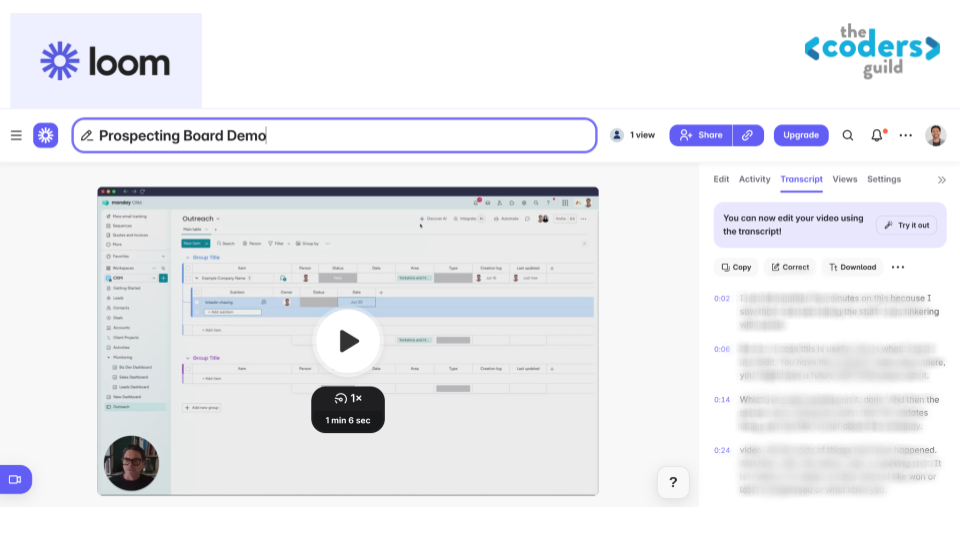
AI for SMEs: What’s Worth Your Time

4 mins read
By Crispin Read - 27th Jun 2025
Resources, real-world examples, and where we go next
I spoke at TechNExt about AI use cases for SMEs. The aim wasn’t to show off tools. It wasn’t to talk about what’s coming in five years. It was to get practical – to share what we’re actually seeing work in the real world, with the teams we train and support.
This post is the follow-up I promised. It includes the key ideas from the session, but more importantly, it links out to everything we mentioned: the research, the templates, the walkthroughs, the guides.
The Big Idea: Start With People, Not Tools

So much of the overwhelm around AI comes from approaching it backwards.
We start with “What tools should I use?” when really we need to start with:
- Who’s doing the work
- What’s repetitive or time-sapping
- What tools (AI or otherwise) can help with those specific things
This is the pattern we’ve seen work across dozens of businesses. When they flip the order, they get results.
The 1% That Changes Everything
If UK SMEs improved their productivity by just 1% a year, that would add £94 billion to the UK economy over five years. That’s not a hypothetical – it’s from Be the Business, and it’s backed by data.
A Microsoft and WPI Strategy report recently projected that AI could add £78 billion in value to UK SMEs over the next decade.
At the same time, a survey from Microsoft showed that 55% of SME leaders believe AI could add value to their business – but 46% say they don’t have the skills to use it. That’s the gap we’re trying to close.
Meanwhile, adoption is rising fast. A recent study showed that AI use by European SMEs jumped from 19.4% in 2023 to 31% in 2024. In the UK, uptake has grown from 40% to 58% in the last year alone.
What We Covered in the Session

1. Better Setups = Better Results
Lots of people have used ChatGPT. Fewer have actually set it up properly.
We talked about:
- Using custom instructions to tailor ChatGPT to your needs
- Choosing the right model for the task: GPT‑3.5, GPT‑4, GPT‑4o
- Understanding how to give feedback, clarify goals, and guide the AI through the conversation
This Forbes piece also gives useful ideas for making AI content sound less robotic.
We also mentioned Projects in ChatGPT, which let teams collaborate with consistent setups and documents.
2. Process Helper GPT

This is one of the easiest and most powerful wins for SMEs.
The approach:
- Record yourself talking through a task using Loom
- Export the transcript
- Feed that into a GPT trained on your process document template
What you get is a clear, shareable SOP – not just something that lives in your head.
A University of St Andrews study found that SMEs using AI in this way saw productivity gains of between 27% and 133%.
We’ll be publishing a step-by-step guide soon with templates and demos.
3. Copywriter GPT That Sounds Like You
To build a copywriter that works for your brand, you need to feed it good information.
We recommend creating five key documents:
- Tone of Voice
- Business Overview
- Ideal Customer Profile
- Customer Value Proposition
- Style Guide (including “words to avoid”)
Once those are in place, upload them into a custom GPT and set clear rules. It’ll write like part of your team, not like a chatbot.
That guide is also on its way – watch LinkedIn for the release.
What’s Next
We’ll be publishing two detailed walk-throughs soon:
- How to build a Process Helper GPT
- How to create a brand-specific Copywriter GPT
Follow me or The Coders Guild on LinkedIn to get those first.
If you’re interested in shaping the new AI & Automation Apprenticeship, you can register your interest via this link.



